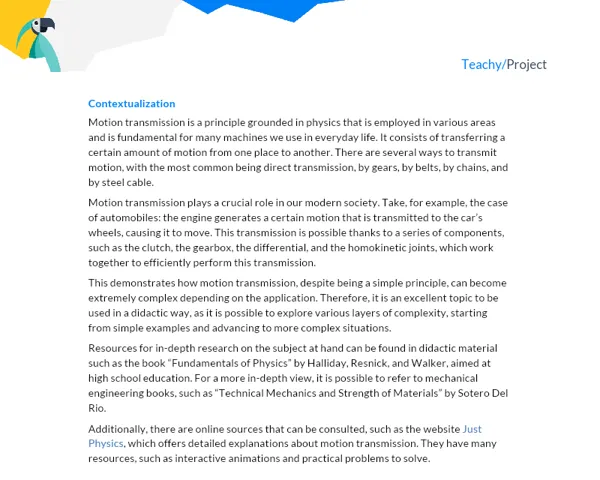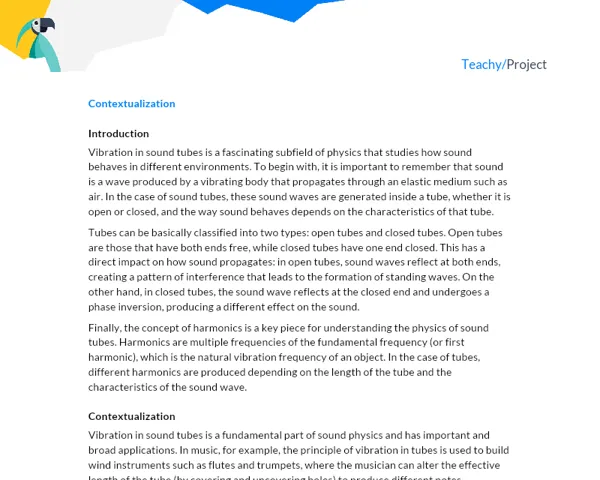Contextualization
Light is a form of energy that allows us to visualize the world around us and is one of the fundamental topics explored in physics. One of the most interesting ways to study light is to observe how it behaves when it encounters different surfaces. In this activity, we will focus on the study of mirrors, specifically concave and convex mirrors, and the formation of images.
Theoretical Introduction
Mirrors are highly reflective surfaces that reflect light in a way that preserves many of its original characteristics. Curved mirrors, such as concave and convex mirrors, reflect light differently from flat mirrors.
Concave mirrors are curved inward, like a bowl. These mirrors can create real images, which are images that appear where the light from points actually converges. The image formed depends on the position of the object relative to the mirror.
On the other hand, convex mirrors are curved outward, like the exterior of a sphere. They form virtual images, meaning the light appears to come from a point, but there is no actual convergence of light there. The images formed by convex mirrors are always upright, smaller than the object, and located behind the mirror.
Contextualization
Concave and convex mirrors are common in our daily lives. Concave mirrors are used in car headlights and microscopes because they can enlarge the image and focus the light. They are also used in telescopes, making it possible to observe very distant objects. Convex mirrors are often used in vehicle rearview mirrors due to their ability to reflect a larger area, despite producing smaller images. By understanding how these mirrors work, we can better understand how these common devices operate and can be optimized.
Physics is the basis for many real-world innovations and is essential not only for understanding the natural world but also for driving human progress. Understanding how light interacts with different types of mirrors allows the development of many useful technologies and helps improve existing ones.
Activity
Activity Title: Light, Reflection, and Image: Concave and Convex Mirrors
Activity Objective
The objective of this activity is to allow students to explore and understand the formation of images in concave and convex mirrors through a practical activity using simple and accessible materials.
Detailed Description
Student groups will conduct experiments with concave and convex mirrors to observe and analyze the characteristics of the images formed.
Required Materials
- Small concave and convex mirrors
- 1 ruler
- 1 flashlight
- White paper and pen/brush
- 1 small object (e.g., a small doll)
- 1 compass
Step by Step
-
The first step is to organize students into groups of 3 to 5 participants and distribute the necessary materials to each group.
-
The group starts the experiment by exploring the formation of images in convex mirrors. Place the mirror in a stable position and position the object at different distances from the mirror, observing and noting the characteristics of the reflected image.
-
Now, place the object along the ruler next to the mirror and, with the flashlight, illuminate the object to project the image onto a piece of white paper. Observe the formation, size, orientation, and type of image (real or virtual).
-
Repeat steps 2 and 3 with the concave mirror and compare the differences in image formation.
-
Document all observations and results (where the image forms, size of the image, orientation) on the white paper.
Project Delivery
At the end of the project, each group must deliver:
-
Written report:
- Introduction: contextualize the theme, explain its relevance, practical uses, and the objective of the activity.
- Development: explain the theory of concave and convex mirrors. Detail the experiment procedures, the method used in the analysis, and present the results obtained.
- Conclusion: revisit the main points, explaining the learnings obtained and the conclusions drawn from the project.
- Bibliography: list all sources of information and materials consulted during the research and preparation of the report.
-
Demonstration of results: include images or videos of the experiment showing the formation of images in both mirrors.
-
Project presentation: prepare a short oral presentation on the procedures and findings of the work.
Remember: work with collaboration, respect, and organization throughout the process. This is a moment to learn not only about Physics but also about teamwork and problem-solving.


